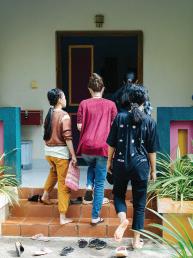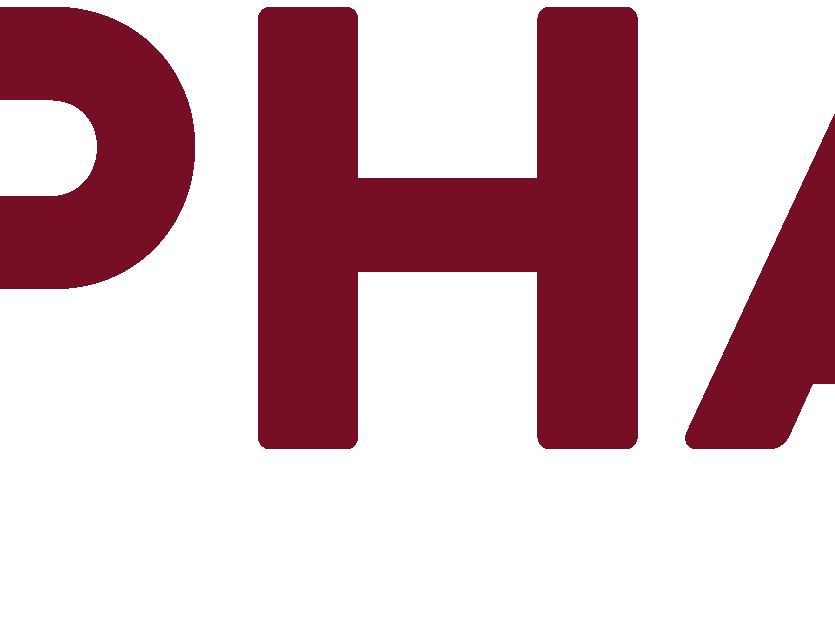








Recently, I had the opportunity to sit across a table from a vibrant young woman, Hom, in one of Rapha’s art therapy centers in Southeast Asia. I glanced around the beautiful, child friendly interior and took in the artwork on the walls that had been created by young survivors as part of their healing journey. An artist herself, Hom had chosen this comforting space to share her story with me. As Hom began to speak, I remembered that young teenage girl I had first encountered nine years earlier, shortly after her rescue and placement with Rapha.
When Hom found herself trapped in a human trafficking ring at fourteen years old, she didn’t know that she was in desperate need of rescue. Her life had unraveled so quickly that it was difficult to remember how it had all happened.
Hom had been so angry by the abandonment of her father. In his absence, everything began to spiral. Her mother made the difficult decision to move to another region to find work, leaving Hom and her little sister with their elderly grandmother. Life was difficult. Hom’s grandmother loved her grandchildren, but didn’t have the resources to provide the girls with the basic care that they needed. After many months of struggling with anger and loneliness following her mother’s departure, Hom befriended a young man on social media who was kind and attentive to her. When she spoke to him, she felt seen and heard. He told her that she was beautiful. He said that he would always be there for her and that he knew a way that she could help her family. Placing her trust in him, Hom ran away from her grandmother’s protective care and made her way to the city, where she quickly became a victim of online commercial sexual exploitation.
At first, Hom felt very grown up as she became part of this gang where she and other young girls were bought and sold by the hour. She thought of her traffickers as friends and believed that they were trying to help her. She did not understand the scope of how those around her were using her and profiting from her exploitation. It didn’t take long, however, for Hom to begin to realize the terror and darkness of her new reality. The anger she had once had toward her parents was now focused inward. She blamed herself for everything that had gone so wrong in her life and was furious with herself for having been so naive. Each day she sank deeper into addictive habits, self hatred, and self harm.




Hom was trafficked for more than a year by the time that law enforcement authorities were finally able to intervene on behalf of her and the other young girls in the trafficking ring. She was brought to Rapha and placed under protective custody, but rescue was a difficult concept for Hom to grasp. She hadn’t known that she was in desperate need of rescue, but instead believed that her suffering was the result of the poor decisions she had made. After all, wasn’t it she, herself, who had decided to run away to the city and become a part of this gang? Wasn’t she the one who had willingly agreed to be sold in order to help her family? She deserved what she got, didn’t she? It would be many months into Hom’s healing journey before she would begin to find forgiveness for her father whose abandonment brought so much chaos to his family’s lives, for her absent mother, for her grandmother who could not properly provide for her grandchildren, for the traffickers who she once considered her friends, and even for herself.
My heart was so full as I visited with Hom in the art center that afternoon. During her time in Rapha’s protective care, Hom had discovered that she was a skilled artist. Her passion for art and for the children served by Rapha had brought her back all these years later as a staff member working in the art center. I told her how proud I was of her. She smiled, blushed, and then dropped her eyes. “If I had not been rescued, I would have become a trafficker.” she said. This was part of her story that I had not heard before. She explained that just before she had been rescued, she had made an agreement with her traffickers to begin to recruit other young girls into the ring so that she would no longer be forced to perform sex acts with buyers. “Now, instead of trafficking young girls, I get to work with survivors here at Rapha as they heal,” said Hom.
Later, I watched as Hom taught a group of girls how to use their new watercolor kits. Tears filled my eyes as I thought about how different Hom’s life would have been if she had not been rescued and brought to Rapha. Instead of recruiting girls into the darkness of trafficking, today Hom is walking alongside them as they experience the light of healing, hope, and freedom.
This Christmas season, as we celebrate the birth of Jesus–the greatest gift of rescue ever given–my prayer as you read Hom’s story is that you will understand the blessing that you are to Rapha International and to the children, families, and communities we serve together. Thank you for making it possible to run to the darkest places on behalf of the most vulnerable, so that they too might experience the light of healing, hope, and freedom.
Note: Hom’s name is changed to protect her identify and privacy.
"An artist herself, Hom had chosen this comforting space to share her story with me."


STEPHANIE GARMAN FREED CEO AND CO-FOUNDER
When Rapha International was founded over 20 years ago, our first Survivor Care campus in Battambang, Cambodia was called Rapha House. Rapha means “healing” in Hebrew, and it was the vision of our founders that healing would happen within those walls. Soon, it became evident that the work of Rapha would extend far beyond the walls of that house. Now, more than 20 years later, Rapha is a thriving, multi-faceted organization that provides high quality services within and well beyond our residential Survivor Care campuses.
We are honored to be a part of each child’s journey and to witness the healing and hope that the Lord provides in their lives and the lives of their family members. Staff at Rapha meet regularly for prayer and devotional time in preparation for their work. Our teams are committed to modeling the love of Christ, encouraging survivors to find healing and freedom in Him, and to providing discipleship opportunities for those who choose to participate.












Rapha’s residential Survivor Care programs provide holistic services to young survivors of trafficking and sexual abuse, while providing safe shelter during a season when a child does not have another safe place to stay.
Rapha provides life-changing services to survivors of trafficking and abuse in non-residential settings. Rapha counselors provide non-residential traumafocused counseling at several locations, including the United States.
Rapha staff and leadership understand that strengthening families is the best way to keep children safe. Accordingly, all of Rapha’s programs contain elements that provide support and resources to families.
In addition to serving individual children and their families, Rapha works to shape communities by providing training on abuse, trafficking, and trauma. Rapha staff works with law enforcement officers, government officials, and other partners, building the capacity of local systems to combat trafficking.







Partner — What is Rapha’s greatest need? It’s you. Rapha’s most critical need is for individuals, families, businesses, and churches to financially partner with us in providing quality care for more child survivors. 1.
2.
Advocate — What can I do to help?
The Advocacy Handbook will guide you to take action in the fight against modern day slavery. This handbook is full of ideas and resources to help you learn more about how you can help.
3.
Pray — Will you pray with us?
Combating trafficking and abuse can be overwhelming, even hopeless. Make a difference today—commit to 30 days of prayer for Rapha and for an end to modern day slavery.
Learn — How can I learn more?
High quality and evidence-based training equips our communities to identify and intervene in abuse and exploitation. 4.
Did you know that you can also give in a way that ensures your dollars keep on giving for years to come? When you give to Rapha International’s Freedom Forever Fund, you’re giving to an endowed fund that we hope to grow into an asset that will supply Rapha’s operational needs in perpetuity. If you want your giving to underwrite Rapha’s future and ensure more children are served in more places, the Freedom Forever Fund is a great way to give.
Would you like to talk to someone at Rapha about creative giving options including tax-advantaged giving, donating appreciated assets, giving through a retirement account, or including Rapha in your will?
Email me at ageiser@rapha.org to learn more about creative giving options!


ANTHONY GEISER CHIEF FINANCIAL OFFICER













This year, decorate your Christmas tree with a Rapha International ornament! Choose from a general Rapha design or a design representing Cambodia, Thailand, or Haiti.
Rapha Ornaments | $10

Give a gift that will provide vulnerable children and communities with lasting freedom!
Rapha is more than a house, it is a movement of healing, hope, and freedom. Your support is more than financial—it’s a statement about the power of hope and love.



$50
Provide one counseling session for one survivor.





$100 $70 $150
Provide one survivor with the keys to freedom—Safety, Healing, Education, and Social Work for one day.
Provide school supplies, clothes, and food for one vulnerable child and their family.
Provide one community training on preventing trafficking and responding to trauma.



"TodayHom is walking alongside girls as they experience the light of healing hope, and freedom."